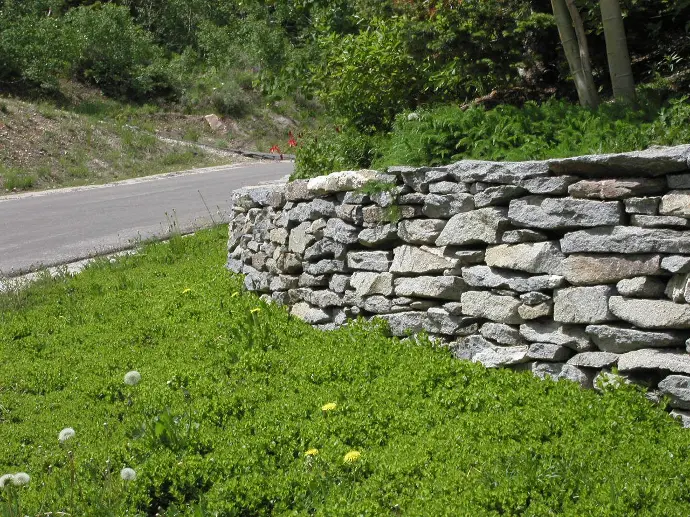HOW TO BUILD A BEAUTIFUL DRYSTACK GARDEN WALL
A natural stone retaining wall adds beauty and value to your property
It is true that an experienced stone wall installer can readily build a great stone wall – and it will last forever. However the building of a dry stack stone wall is a project that can be tackled with great success by any homeowner.
There are two types of retaining walls. One is a stone wall that uses mortar, and a foundation. The other is referred to as dry stacking stone, where the stones are stacked without the use of mortar.
BEFORE BUILDING A WALL
Check with your local code office to see if your local ordinances require a wall to be engineered. A general rule for most communities is that you can build the wall yourself if it measures 4-feet or less in height. If the wall is to be no more than 4-feet high, then you can use stones which measure about 1-foot deep.
HOW MUCH STONE WILL YOU NEED?
First determine the length (L) and height (H) of the wall in feet. The depth (D) of the stone will also play a factor in your estimate for cubic feet (CF). Here is your formula: L x H x D =CF
For example, if you’ve determined that your wall will be 50-feet long, 2-feet high and an average of 1-foot deep stone, your calculated estimate will be: 50’ x 2’ x 1’ = 100 cubic feet. Allowing for airspace between stones, you will need an average of 135 pounds per cubic foot. 100 CF x 135 LB/CF = 6 ¾ tons (2000 LB/ton). Take a little extra stone to allow yourself to be more selective when constructing your wall.
TOOLS & MATERIALS NEEDED
- Heavy Hammer
- Folding rule
- Carpenters level
- Pick & shovel
- String line
- Selected stone and a cheerful disposition!
GETTING STARTED
Dig a trench about 6 inches deep and 12 inches wide (or as wide as your larger stone pieces) along the base of where the wall is to be built. There is no elaborate footing required for a “dry” wall. Since no mortar is used the stones are NOT BONDED together and they will rise and fall with the frost – causing no damage to the wall.
STACKING YOUR STONE
Place your largest stones end-to-end in the trench. For optimal results, lay all of your stones down flat, as they would naturally lay on the ground. Work from one end to the other as you begin to stack the stones to construct your wall. Remember to “batter” the wall, which is to slope it back towards high ground, as you build upward.

As you build, try to avoid continuous horizontal or vertical joints. Break up the natural joints by staggering larger and smaller stones. For strength and an aesthetically pleasing appearance, place stones so they fit tightly together. As you build upward, fill in the space on the backside of the wall with dirt, and compact the dirt as you go. Every now and then turn a long stone into the hillside to act as an anchor, or “bond” stone. This will improve the stability of your wall. Save some nice flat stone pieces to cap the wall on top.
Keep in mind that stone is heavy and it lasts forever, so don’t get discouraged when your salesperson talks price per ton for various garden wall stone options.
Build a Beautiful Stone Retaining Wall